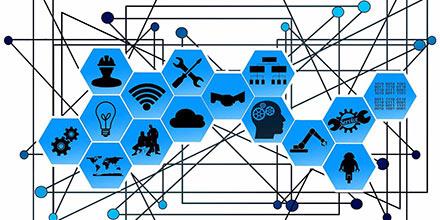
Plant managers can often find themselves so focused on a particular aspect of operation, such as maintenance on critical machinery or refurbishing outdated equipment, that they lose sight of other operational and process-oriented functions that need attention. These may include inventory management, call-center management or workforce scheduling. For many plants and factories, the Great Recession caused routine expenses like upgrades and process improvement to be put on hold. Now, those systems have eroded to the point of being a hazard to overall business health.
The back-end systems or internal tools are the first ones cut during slow times and the last to get an overhaul. Convenience is sacrificed. Purchases of “nice-to-have” solutions like mobility tools or applications for easier expense reporting are postponed so high-priority upgrades can stay on track. Now, many facilities are operating with tired, outdated processes and patched technology that frustrates personnel.
However, it is not all doom and gloom. Facility management is becoming more high-tech, innovative and cost-effective. Automation frees worker from performing routine, menial tasks, so they can focus on the more complex issues that require human insight. Here are five ways technology can help your plant expand its capabilities without overextending your budget.
Internet of Things (IoT)
Sensors have become more affordable, and internet connectivity faster and more reliable, driving the growth of the internet of things (IoT). Plant managers have been inundated with hype about the IoT and digital transformations that promise to reinvent the industry, but sensors can also be used in modest-sized projects, too. The IoT does not have to be intimidating. Sensors can collect and transmit data about a wide range of maintenance-related conditions, such as overheating, spikes in energy consumption, excessive vibration and speed fluctuations.
Once the stream of data is sent to the cloud, it can be analyzed in search of anomalies which will trigger action that can then be automated. One of the most common applications of IoT technology is to monitor for early warning signs that equipment is in need of service. By detecting symptoms of deterioration early, intervention can happen before the issue causes major repercussions.
Big Data and Analytics
Analytics is a critical element of the IoT. Sensors produce massive amounts of data, reaching a volume and complexity sometimes called Big Data. The data, with the context of time and place, must be sorted for it to have meaning for personnel. Without analytics, it is useless.
Predictive Analytics, Artificial Intelligence and Machine Learning
Today, analytics can look to the future as well as the past. This extra multi-dimensional view is a valuable tool for managers as they prepare forecasts, plan budgets and anticipate resources that will be needed, from parts to people. Predictive analytics use embedded functionality such as artificial intelligence (AI) and machine learning to recognize patterns and apply data-science algorithms to project future incidents.
Mobility, Accessibility and Usability
Plant managers seldom sit in an office in front of a desktop computer. They are out in the facility, walking the floors, following up on work orders, inspecting, supervising, watching how various assets work and talking to people in different business units about their needs. Managers and their technicians must be able to access the information technology (IT) system easily from anywhere in the facility their job may take them. This requires mobile solutions designed for easy access and screens that can adapt to the device in use, whether a tablet, laptop or smartphone. With modern mobile solutions, you can get ease of use, portability and convenience that allows you to stay on top of problems and troubleshoot them from anywhere in your facility.
Portals, Traceability and Social Collaboration
In addition to reliable data and easy access to data, facility managers also need to share data and communicate with colleagues and suppliers about assets and conditions. Assets from machinery to infrastructure can involve high-tech components, security protocols, sensors, telemetry, robotics and automated systems. Service technicians may need to communicate with design engineers or parts suppliers. Technology can support such collaboration and sharing of data through a variety of tools, such as online portals and social collaboration applications that can be saved to work orders, inventory reports or asset assessments.
Final Conclusions
Technology is changing at a rapid rate, making it difficult for plant managers to stay on top of the latest innovations. With today’s high expectations for stretching resources and keeping current systems operating at their peak, managers need every time-saving tool they can get. The potential gains in efficiency and productivity from various technologies can help your plant run smoothly and support the growth opportunities that are emerging. Now is the time to invest in your facility and the teams who keep it working.




